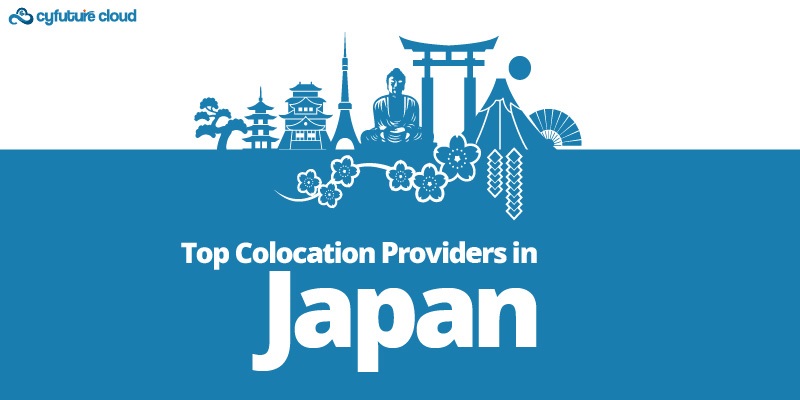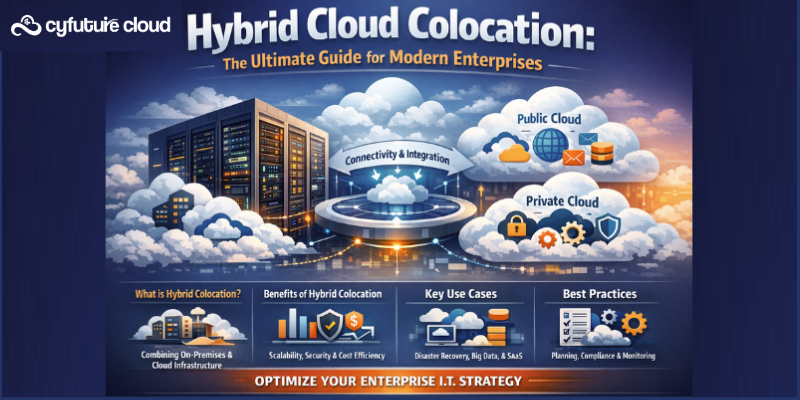Table of Contents
- Introduction
- How do you store your data?
- What is Cloud Storage?
- Cloud Data Storage Types
- What data requires storage?
- Encryption
- Tokenization
- Storage Protection Capabilities
- Storage Features
- Access Protocols
- Storage Security
- Disaster Recovery Capabilities
- Disaster Recovery Considerations
- Business Continuity Plan
- In closing
- Final Words
Introduction
Cloud storage is one of the most critical utilities in today’s digital world as it allows an organization or an individual to store his/her data safely and access it as needed. It may be rather useful for businesses and completely ordinary people to comprehend the principle of functioning cloud storage to prevent threats like Cloud Swift CDN malware and ransomware attacks. As for ransomware, it is most secure to use it in isolation, which means one kind at a time only.
This blog will discuss everything a beginner needs to know about cloud storage, its advantages, and how to use this service to safeguard your data.
How do you store your data?
Probably, In system hard drives, external hard disks, USB flash drives, or digital cards.
However, we are suggesting storing the data through cloud storage that entirely revolutionized the IT Industry.
This post is moving around the world of cloud storage. Ahead, diving into the ocean of cloud storage, understand the term Cloud Storage.
What is Cloud Storage?
Cloud storage or Online Storage is all about managing, maintaining, transmitting, and storing data in an off-site location. You can effortlessly access the data and files from anywhere and at any time. You can connect with your data through a dedicated private network or public internet connection.
Several cloud computing services are free and easily accessible, including G-drive, Dropbox, and Box. Nevertheless, users and organizations pay for their cloud data storage. In consideration of massive storage sizes and add-on cloud services.
According to Statista, by 2021, The cloud stores around 50% of all corporate data.
Hopefully, this informative write-up has left you with a greater understanding of cloud storage. These are plenty of details any business requires to store data. For regulatory compliance, analytics, disaster recovery, or simply serving it on the web. For further information, get connected with us.
Cloud Data Storage Types
Here, we discuss four types of cloud data storage. The Names are Network attached storage (NAS), Direct Attached Storage (DAS), Storage Area Network (SAN), and object-based storage. Each storage type offers its benefits and has its use cases:
Network Attached Storage (NAS)
The Network Attached Storage (NAS) is a data storage device connected to a network. This device allows authorized and verified users to store and retrieve data from a central place.
A NAS system is perfect for small-medium businesses. It is responsive and convenient to operate. Moreover, you can also add additional storage if you require it. It is more like a private cloud swift, economical, and in-built with the assets of a public cloud.
Direct Attached Storage (DAS)
As the name might suggest, Direct attached storage (DAS) is a type of data storage directly connected to a computer. Due to its specific advantages, DAS plays a crucial part in many organizations. This device allows access to the storage only to a single machine.
However, the non-existence of a network doesn’t mean DAS has no interface connection. The connection of DAS is between numerous types of interfaces and a server. For instance, a Host Bus Adapter (HBA), SATA, IDE/ATA, SCSI, SAS, eSATA, and Fibre Channel (FC). Such interfaces are compatible with other network storage also.
Storage Area Network (SAN)
A network that provides block-level network access to storage is known as a Storage area network (SAN). It delivers shared pools of storage devices to multiple servers.
Often, SANs are used to enhance the availability and performance of applications. It boosts the effectiveness and utilization of storage. SAN is essential in the Business Continuity Management of organizations.
Object-Based Storage
Object storage is a new era of technology used to manage and manipulate data as objects. Instead of being ingrained into files or folders, you will store all data in one massive repository. Probably, the accomplishment of distribution will be across numerous physical storage devices.
Provisioning Storage
A process of assigning storage space to computers, servers, virtual machines (VMs), or other allied devices is called Provisional storage.
Storage Provisioning Planning
It is the process of planning which data needs storage space, learning about its format and structure. Moreover, how confidential it is, and what policies and rules & regulations are required to store that data.
What data requires storage?
It is the process of evaluating the storage capacity to fulfill the current needs. It forecasts the future storage requirements too. Mainly confidential or sensitive data needs storage. It lets administrators plan and schedule data storage purchases based on projected needs.
To store the data, organisations must have encryption policies, Acceptable use policies, and password policies. Along with email policies, and Data processing policies. For data storage, an organization needs general compliance regulations like disclosure, Encryption, and anonymizing. Additionally, Retention schedules, and Breach notifications.
Thick Storage Provisioning
Thick Storage Provisioning is also known as fat provisioning. It is pre-allocated storage on the physical memory at the formation time of the virtual disk.
In thick provisioning, the allocation of virtual storage completes at the request time. For instance, if you want to create a 100 GB space. Then you will need to occupy 100GB of physical disk space at the time of creation. The occupied physical storage cannot be used for anything else, even if the disk has no data. Thick provisioning may cost more as compared to thin provisioning, but potentially, it provides upgraded performance. The use of thick storage provisioning and virtual DAS go on together.
There are two subtypes of thick-provisioned virtual disks:
- A Lazy zeroed
- An Eager zeroed disk
Thin Storage Provisioning
It is a method of on-demand storage allocation. Based on the user necessity in SAN, centralized storage disks and storage virtualization systems are known as Thin storage provisioning. It is also known as virtual provisioning and thin storage.
Thin storage provides the allocation of space based on the user’s requirements. This storage process is more cost-effective than thick storage provisioning, but its performance is unacceptable. The use of this storage is for file or object storage.
Encryption
Encryption is the prime element that encrypts your data and protects it from unauthorized local access. It is an effective security method to protect data that leaves you vulnerable to attacks. Like, eavesdropping and man-in-the-middle attacks. Encryption provides data protection in both states, whether it’s at rest or transit.
- For encryption at rest – It protects stored data from a data exfiltration or system compromise.
- For encryption in transit – Before transmission, data encryption occurs in the process. Then, the authentication of system endpoints occurs, and you get decrypted data and on arrival verification.
Tokenization
Tokenization is a masking structure to protect cloud data from malicious threats or data breaches. It replaces sensitive and confidential data with a different value called a token. It allows for the storage of the data in a more secure solution.
The purpose of tokenization is to protect the actual data from secure storage and other processes. A few examples are –
- Personally Identifiable Information (PII)
- Protected Health Information (PHI)
- Store a token in place of the social security number (SSN)
- Detokenize the SSN from the system when required
- Often used for the payment process
Storage Protection Capabilities
High Availability
High availability (HA) plays a vital role in protecting sensitive data. This storage system is continuously operational or provides at least 99% uptime.
- Redundancy – A redundancy is the characteristic of HA. The redundancy allows to keep the data in one place and removes a single point of failure (SPOF).
- Replication – The use of the replication mechanism increases the high availability of data services.
- Cloning and mirroring – In cloning, high availability data simply copies from one storage space to another. The use of the mirroring mechanism is mainly for backup and disaster recovery.
- Clustering – The group of hosts is called clusters that act as a single system and provide continuous availability. The use of HA clusters is for critical applications. For instance, eCommerce websites, databases, and transaction processing systems.
- Load Balancing – It helps redirect traffic from busy and unavailable VMs.
- Failover zones – The database server is in the process of failing over from the primary to the standby.
Redundancy
Redundancy in data storage protection plays an important part. The meaning of redundancy is to keep similar data in two or more places. So that, in the case of data loss or data corruption, organizations continue with their work.
The capability of redundancy in storage protection includes –
- Redundant Array of Inexpensive/Independent Disks (RAID) – RAID technology not only aids in improving availability and performance. Infact, in some cases, it can also help organizations mitigate security incidents.
- RAID redundancy levels/factor – It represents various levels of storage architecture.
- RAID 0 – striping (no redundancy) – In this level, Users get the best performance but no data protection due to zero redundancy. It includes two or more disk drives that provide data striping.
- RAID 1 – mirroring – RAID 1 arrays consist of two drives. The one is mirror configuration, i.e., the same data as the other disk drive. It helps in growing the performance by two times boasting the read rate of a single disk. However, it limits the capacity of the total disk space by half.
- RAID 5 – striping with parity – This level of redundancy needs at least three disk drives. It uses data striping and parity that gives data protection and a performance boost. The RAID 5 flaw is that the size of the drive segment is limited to the smallest disk drive.
- Nested RAID – Nested RAID uses two raid types in a single go, to get the benefits of both types of RAID. For example, The detection of both striping and mirroring occurs in RAID 10.
- The left number equals physical the right number equals the logical.
- RAID 1+0 (RAID 10) – In this array, two or more equal-sized RAID 1 array become one and create a single array. The new one has both striped and mirrored features. It gives a boost in performance as well as data protection. The major drawback of this level is that any drive segment is limited to the smallest drive in the array.
- RAID 0+1 (Blocks Striped) – This array is called a “mirror of stripes”. It requires a minimum of 3 disks. Moreover, the implementation is for a minimum of 4 disks.
Replication
It is the creation of replicas/copies of data from one storage location to another. An implementation of replication arose between two on-premises, or between off-premises appliances in different locations. Alternatively, to completely geo-physically separated appliances via cloud based services.
Data replication in the same premises or region is known as Same-Region Replication (SRR). The Data replication between devices of different Regions is called Cross-Region Replication (CRR).
There are two types of data replication –
- Synchronous Replication – This type of replication creates real-time copies. This type of replication is perfect where there is less requirement of RTOs (Recovery Time Objectives). It proved to be reliable during the disaster, but it tends to be very expensive. It requires capable computation capacity to operate smoothly.
- Asynchronous Replication – This replication process creates time-delayed replicas, as per the defined schedule. It is designed to work over distances, and uses less bandwidth; in comparison to its counterpart. The businesses with the requirement of longer RTOs (Recovery Time Objectives) opt for this replication process.
Storage Features
Compression
Data compression is a technique used to decrease the number of bits required to represent data. The use of data compression is saving storage capacity and reducing costs for network bandwidth. Moreover, storing hardware and swift file transfer.
Another use of the compression technique is to conserve storage space by rewriting data with a compression algorithm. •Ex: .zip, .tar, .rar, etc.
To make it more clear. Let’s understand this compression Demo:
The ASCII code for the letter “e” is 01100101. After compression, it can represent “e” as 0001 leads to saving 4 bits. Similarly, you can do this for each alphabet and save almost 50% of the data. The actual compression algorithms are much more complicated and work best on non-binary. The compression of text-based data results in .txt, .docx, .pptx formats. Other compressed formats for images and videos are .jpg and .mp4.
Deduplication
Data Deduplication is an efficient technique that has acquired attention in large-scale storage systems. It uses to remove redundant data, decreases storage cost, and improve storage utilisation.
In the Deduplication, process files can be evaluated for duplication and eliminated when it occurs. Besides, it creates pointers for the remaining files.
Obfuscation
It is the process to make sensitive information difficult, to understand for hackers with the help of programming code. It uses to prevent data from malicious actors by making it useless in appearance.
There are three data obfuscation techniques:
- Masking out – To create different versions with a similar structure is the purpose of this method. This way, only value changes, but not data. You will modify this technique in several ways, like replacing words and shifting numbers or letters. Furthermore, switching partial data between records.
- Data encryption – This technique uses cryptographic methods to codify the data and make it entirely unusable till its decryption. The use of data encryption is for symmetric or private/pub key systems. It is one of the safest methods. Still, when you encrypt your data, you cannot manipulate or analyse it.
- Data tokenization – It changes certain data with meaningless values. However, authorised users can connect the token to the original data. The use of token data is mainly in production environments. For example, to perform financial commerce without transmitting a credit card number to an external processor.
IOPS (Input/Output operations per unit)
The use of IOPS is to measure the maximum number of reads and writes to non-contiguous storage locations. Its pronunciation is EYE-OPS.
Access Protocols
Server Message Block (SMB)
These days, one of the well-known file server protocols is Server Message Block (SMB). The use of client-server communication protocol is for sharing access to files and serial ports. Besides, printers and other resources on a network. SMB enables secure, efficient, and scalable file sharing and network resources on implementing this protocol.
The latest version of SMB is 3.1.1, compatible with Windows 10 and Server 2016. Several cloud service providers support this protocol.
SMB software must meet proper documents like licensing, performance, portability, and security requirements, which become a challenge for the organisations.
NFS
A network file system, commonly known as NFS. It is a protocol used to store, retrieve and share files on the network. This protocol is one of many Distributed File System standards (DFSS) for network-attached storage (NAS).
The Internet Engineering Task Force (IETF)manages NFS. The name of its latest version 4.2 is RFC-7862. It was approved in Nov 2016 as a set of extensions to NFS version 4 (RFC-3530). This protocol is mainly popular in the environment of Unix and Linux.
NFS uses Remote Procedure Calls (RPCs) to line requests between clients and servers. The cloud providers support this protocol too.
Application-Level Access Protocols
An application-level access protocol defines how clients & servers application processes, transmit messages, running on various end systems. An application layer protocol defines:
- the request and response messages.
- The syntax of the various message types
- A field information
- Rules for determining when and how a process send/receive messages
Have a look at different protocols –
- Hypertext Transfer Protocol (HTTP) – This www application protocol runs on top of the TCP/IP. HTTP does not act as a storage protocol, but it supports cloud storage accessibility. It executes an algorithm for transferring data between HTTP endpoints which send and receive responses. HTTPS layer adds SSL/TLS encryption.
- File Transfer Protocol (FTP) – The use of FTP is to transfer files. It eases between any two machines. The benefit of FTP is that it shares the files via remote computers with trustworthy and efficient data transfer.
Private Cloud SAN Protocols
Storage Area Network (SAN) is a high-performance network that connects the storage and computer system. Usually, it provides access to a block-based storage system.
Storage Area Network (SAN) use the following four types of block-level storage protocols:
- Internet Small Computer System Interface (iSCSI) – It connects the iSCSI host and storage with the help of Transport Control Protocol (TCP) on TCP/IP networks.
- Fibre Channel (FC) – FC or Fibre Channel Protocol (FCP) uses FC block storage protocols to communicate which are embedded with SCSI commands.
- Fibre Channel over Ethernet (FCoE) – Similar to iSCSI, the FCoE uses the FC framework. It links together the iSCSI host and initiator via the IP Ethernet network.
- Non-Volatile Memory Express over Fabric (NVMe–oF) – Apart from the above three-block storage protocols, this one is the latest. NVMe extends the swift NVMe storage network to Ethernet and Fibre Channel (FC). To improve IOPS between the iSCSI host and storage.
Zoning
It is a fabric-based service for grouping the devices into logical divisions to control communications between those devices. On the completion of the zoning configuration, the devices of the same zone can communicate with each other; cross-zone devices are not permitted.
It promotes fabric stability, efficient management, and security. Smaller SAN environments can function in the absence of zoning, Nevertheless, this approach enables all devices to interact, which can affect performance even with smaller SANs.
Storage Management
Due to the tremendous growth in data, enterprises are turning towards cloud storage. With continuous growth in data and space, cloud storage providers work on store management. Along with the help of software and techniques.
To manage the system storage, here are some key factors of storage management. Have a look:
1. Performance
2. Reliability
3. Recoverability
4. Capacity
Management Methods
To manage the storage to enhance and inflate the efficiency of data storage resources. Here are some general methods and services for storage management:
- storage resource management software
- System consolidation
- multiprotocol storage arrays
- storage tiers
- strategic SSD deployment
- hybrid cloud
- scale-out systems
- archive storage of infrequently accessed data
- elimination of inactive virtual machines
- deduplication
- disaster recovery as a service
- object storage
Earlier, Operating software and handling OS is done by Command-line interface (CLI), a first text-based interface system. Later, to make things simple, a user-friendly web-based GUI was introduced for storage management. Based on the point-and-click technique, that is faster and is easy to use.
Storage Tiers and Classes
Tiered storage is a process for assigning data to different storage media. The data on these tiers is based on availability, performance, cost, and recovery.
Each cloud vendor opts for unique terminology for various tiers and classes. Such as solid-state storage arrays, cloud storage, disk, or tape.
Overcommitting
Overcommitting helps in decreasing storage costs by placing more linked-clone VMs on a datastore instead of a full VM. These linked clones use logical storage space more massive than the physical capacity of the datastore.
Storage Security
Storage security involves the protection of storage resources, data that resides on those resources, and data storage ecosystems. The process of storage security is to protect and secure the digital assets of the businesses. It includes technologies, data, security disciplines, networking, and methodologies.
Authentication
Authentication is one of the methods for storage security. It is the process to provide secure access to authorised users while keeping unauthorised users out. By assuring that the person’s identity is the same as what he/she is claiming for.
Mainly, the accomplishment of the authentication process is through the server by using the username and password. Furthermore, you can also check authentication by using access cards, fingerprints, retina scans, and voice recognition.
The popular authentication techniques are –
- Password-based – The technique requires a password for the specific username. If the password matches with the username, you get in to access the data otherwise not.
- Token-based – Users get a token in the form of the authentication key to naccess the data like OTP.
- Certificate-based – It requires a Digital Certificate to identify a user, machine, or device. Before granting access to a resource, network, application, etc
The three types of authentication factors are –
- Single-factor authentication
- Two-factor authentication
- Multi-factor authentication
Authorization
It is the process of granting responsibility to someone to do something. It’s a way to check if the user has permission to use a resource or not. Usually, the authorization and authentication work together, so that the system identifies the one who accesses the information.
A few authorization techniques are –
- Role-based access control
- JSON web token
- SAML
- OpenID authorization
- OAuth
Disaster Recovery Capabilities
The ability to recover data smoothly nonetheless of a hardware failure, natural disaster, data breach, or ransomware attack.
Recovery Metrics
Disaster recovery metrics lie between easy and self-explanatory to complex and multidimensional. However, two standard metrics can be an asset for any business continuity strategy.
1. Recovery Time Objective (RTO): It is the maximum acceptable time from the occurrence of disaster till operations are restored. It is mainly measured in hours. For instance, if your system is down or crashes on Monday. Your IT people need one day to fix it, then you assign 24 hr RTO to your system. This is a flexible metric, and you can measure it in hours.
2. Recovery Point Objective (RPO): It is a maximum acceptable and assigned time for a backup. For instance, if your business system needs 30 min RPO, then you must do a backup every 30 minutes.
For SMBs or less critical apps and services, the good ROPs and RTOs time is 4-24 or even longer hours.
To improve RTO and RPO performance, you need to take care of these points:
- Check backups – Check your DR plans at regular intervals.
- Keep multiple backups – Follow the 3-2-1 backup strategy to avoid data inaccessibility.
- Monitor the performance – It’s your responsibility to proactively monitor for malware and network availability to avoid system crashes.
- Automate – Taking automatic backups is the need of the advanced business. Manual backups lead to the chance that something goes wrong.
- Use the cloud – Go for cloud backups because they go a long way in terms of automatic syncing. Additionally, simplifying recovery and offsite storage.
Disaster Recovery Considerations
As we all live in the prompt digital world, it needs the fastest solution for the disasters. That occurs at any moment. Research shows that over 50% of businesses will be affected by the disaster without proper preparation and data protection.
To avoid such a situation businesses should need to prepare disaster recovery plans. So instead of pretending that your business is safe from threats or disasters. Prepare a disaster recovery plan for it. So that the damage will be negligible and help you to get back to your business quickly.
Cloud Disaster Recovery Plan
Here are a few considerations you can consider while charting out your disaster recovery plan.
Step 1: Figure out your Infrastructure & Outline Any Risks
It is necessary to learn about your IT infrastructure, including equipment, assets, and data. Check out where the data is stored and how worth it is? After sorting out all these things, you need to evaluate the possible risk. It includes data theft, natural disasters, and power outages. After accounting for all these things, you are in a position to design DR to remove or decrease risks.
Step 2: Conduct a Business Impact Analysis
This type of analysis will give you an understanding of the drawbacks of your business operations once disaster strikes.
Parameters that assess data loss risk are –
a) Recovery Time Objective (RTO)
b) Recovery Point Objective (RPO)
Step 3: Building a DR plan based on your RPO and RTO
After determining RPO and RTO, you need to focus on system designing to meet your DR goals.
You can consider the below mention approach to implementing your DR plan:
- Backup and Restore
- Pilot Light Approach
- Warm Standby
- Full replication in the Cloud
- Multi-Cloud Option
You can also combine any of these approaches for the advantage of your business.
Step 4: Approach the Right Cloud Partner
Your next step is to find a trusted cloud service provider for assistance in the deployment. In case of full replication in the cloud system, you need to consider the following factors. To assess an ideal cloud provider:
- Reliability
- Speed of Recovery
- Usability
- Simplicity in Setup and Recovery
- Scalability
- Security Compliance
Along with big cloud service providers like Microsoft Azure, there are several SMBs also that provide quality disaster recovery-as-a-service (DRaaS)
Step 5: Build Your Cloud DR Infrastructure
It is time to implement your design and create your DR infrastructure. Based on the selected DR approach, there are several logistical aspects to consider:
- How many infrastructure components are needed?
- What is your mode to copy the data to the cloud?
- What are the top methods to approach user authentication and access management?
- What security and compliance will you need to implement?
- What security measures will you need to minimize the likelihood of disasters?
For effortless business operations, you need to ensure that your DR strategy is leveled with your RTO and RPO specifications.
Step 6: State Your DR Plan on Paper
To ensure the effectiveness of DR, state standard guidelines, instructions, and flowchart process on paper. So that if a disaster occurs, everyone is involved in the disaster process. He/she should be ready to take charge of the responsibility as per his role.
Step 7: Test Your DR Plan
To ensure that your DR plan has no loopholes, test it often to check its credibility.
Business Continuity Plan
Disaster recovery plans should prove to be useless if there is no Business Continuity Plan (BCP).
BCP is a document that is a blueprint of how a business will continue operating during an unexpected service disruption. It’s more inclusive than a DR plan and contains possibilities for business processes and human resources. Furthermore, assets and business partners – every aspect of the business that might be affected.
According to IDC, on average, an infrastructure failure can cost USD 100,000 an hour, and a critical application failure can cost USD 500,000 to $1 million per hour. Businesses understand that creating a BCP is more crucial to support growth and data protection
Business Continuity Plan Components
Let’s take a closer look at BCP components essential for successful recovery in the situation of an unplanned disruption.
- Contact Information and Service Level Agreements (SLAs) – Here, you will need to identify the contact information and SLAs. For Instance – Stakeholders, Key personnel, Backup site operators, Providers (equipment, services), and Emergency responders. Also, for the third-party vendors, Facilities managers, and Incident response team(s). Including successors in case key personnel are unavailable or become overwhelmed, and Additional critical third-party personnel.
- Business Impact Analysis (BIA) – It will help businesses to identify and predict business disruption consequences. It enables you to gather information to develop recovery strategies.
- Risk Assessment – The process of identifying, understanding, and evaluating the potential risks to all aspects of an organization’s operations. Like Hazard Identification, Assets at Risk, and Impact Analysis.
- Identify Critical Functions – The use of this process is to reveal the crucial priorities of your business. So that you will focus there first.
- Communication – When an unplanned disruption occurs, communication through relevant sources like social media plays a crucial part. To provide timely updates, as many users turn to social media when incidents arise.
- Testing – To identify gaps in your plan, test it often.
In closing
Hopefully, this informative write-up has left you with a greater understanding of cloud storage. These are plenty of details any business requires to store data. For regulatory compliance, analytics, disaster recovery, or simply serving it on the web. For further information, get connected with us.
Final Words
Thus, this informative write-up should’ve provided the couple with additional knowledge about cloud storage. Cloud storage offers the tools to store data when it’s needed for web hosting, business analytics, compliance, or business continuity. Please get in touch with us if you would like more specific information or a consultation.
One should consider using Cyfuture Cloud for their choice of cloud storage. Our solutions are equipped with the highest level of security, the latest IT solutions, and outstanding customer care to keep your information safe, easily retrievable, and well-managed. Contact Cyfuture Cloud now and change the way you store your data.
Recent Post
Send this to a friend

 Server
Colocation
Server
Colocation CDN
Network
CDN
Network Linux
Cloud Hosting
Linux
Cloud Hosting Kubernetes
Kubernetes Pricing
Calculator
Pricing
Calculator
 Power
Power
 Utilities
Utilities VMware
Private Cloud
VMware
Private Cloud VMware
on AWS
VMware
on AWS VMware
on Azure
VMware
on Azure Service
Level Agreement
Service
Level Agreement 



















